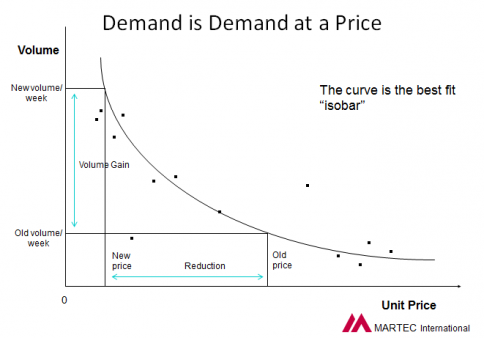Demand Is Demand At A Price
![Price Elasticity Graph Showing How Demand Changes As Price Changes]()
Forecasts are almost always generated given the current price of the items being forecasted. However, once a forecast is made, it is possible to revise the forecast using a price elasticity curve like the one shown here. This example shows that a significant reduction in price will result in a significant increase in sales volume. Sometimes the effect is not so marked.
Given the number of SKUs in most companies’ ranges, this type of approach may only be applied to key items or A items in your ABC analysis. Care needs to be taken with HALO and cannibalization effects if you use price elasticity to amend demand or sales forecasts. Price elasticity curves need enough price change history to be meaningful.
If you pre-allocate on purchase orders and stock arrives several months later, you do have the option to increase your initial retail price if an updated demand forecast suggest that demand will have increased in the interim. A demand forecast revised downwards may also suggest that you should reduce the initial price to achieve the season sell through target.
Within the season, re-forecast demand every week. If you are on track and will sell out on time, don’t change anything. If you are slipping and will sell out too late, consider how a price change will help you increase the rate of sale to meet your target. If you will sell out too early, most retailers will consider it bad practice to increase the price at that point. In this case you will have to examine what else you can bring in early to replace the gaps in store.
Our key tips for effective price adjustments are:
- Make sure you review the sell through graph by store before making markdown decisions.
- When you make a price cut, make it big enough to work first time.
- Do it early, it’s cheaper (margin erosion is smaller).
In a future post we will offer some advice on how to develop meaningful price elasticity curves or tables.
If you’d like more best practice advice check out our sales and inventory management e-learning course.
Please post a comment or question. (Please log in/register to enable you to do this.)
To keep up to date with our best practice posts register to receive notifications via our mailing list.
-
Posted by Brian Hume
7th June 2018

